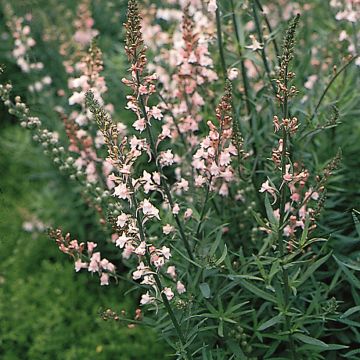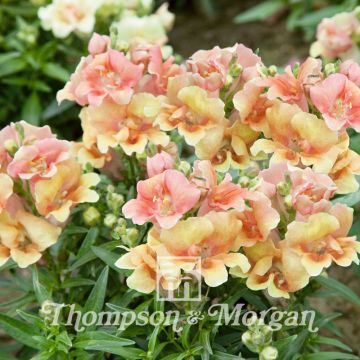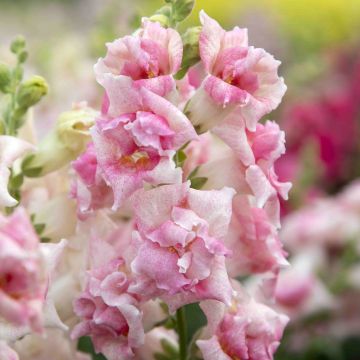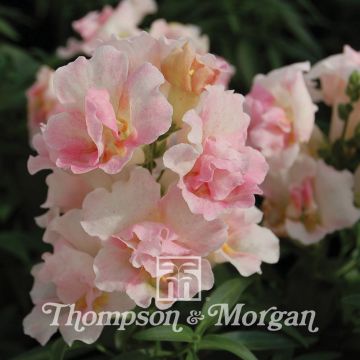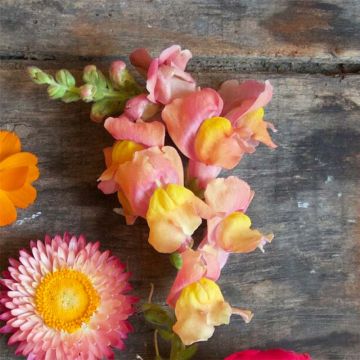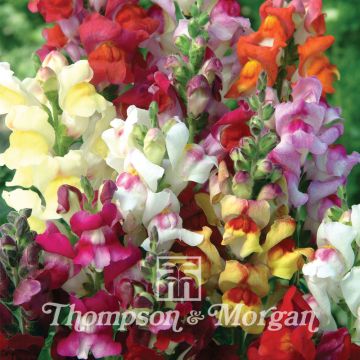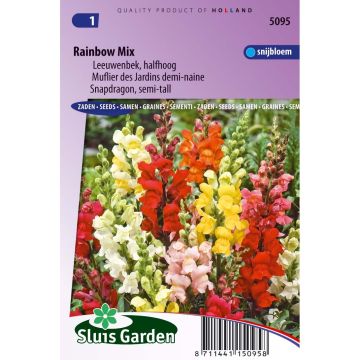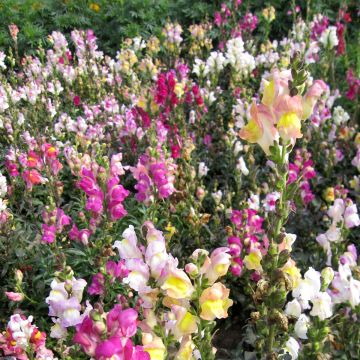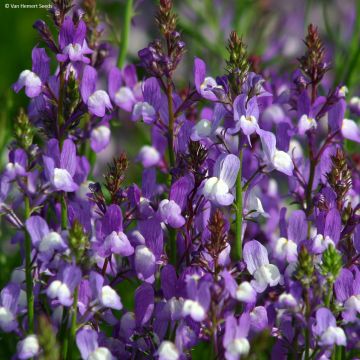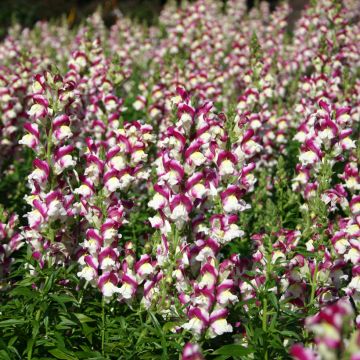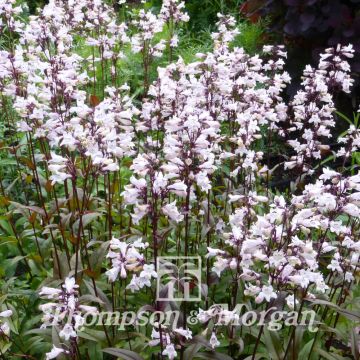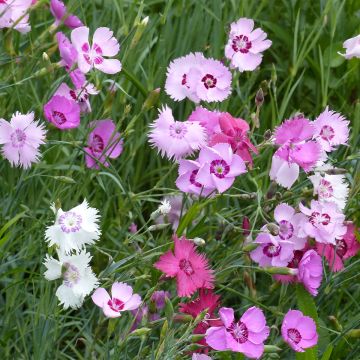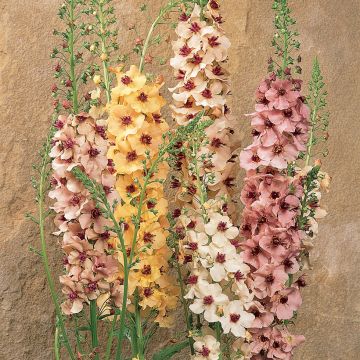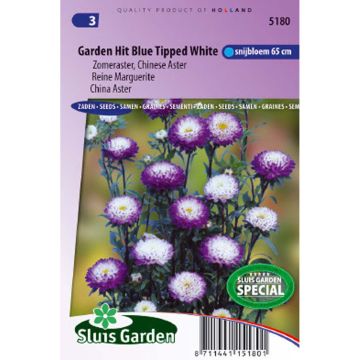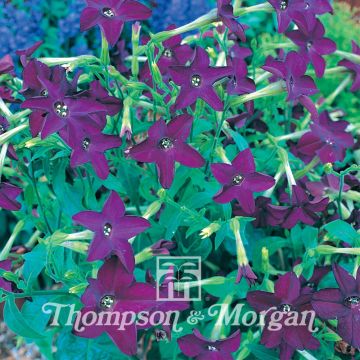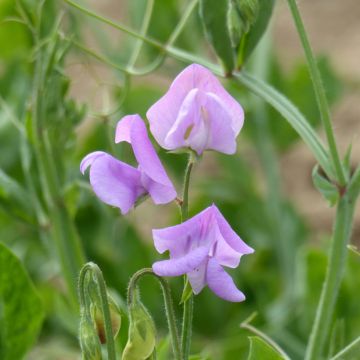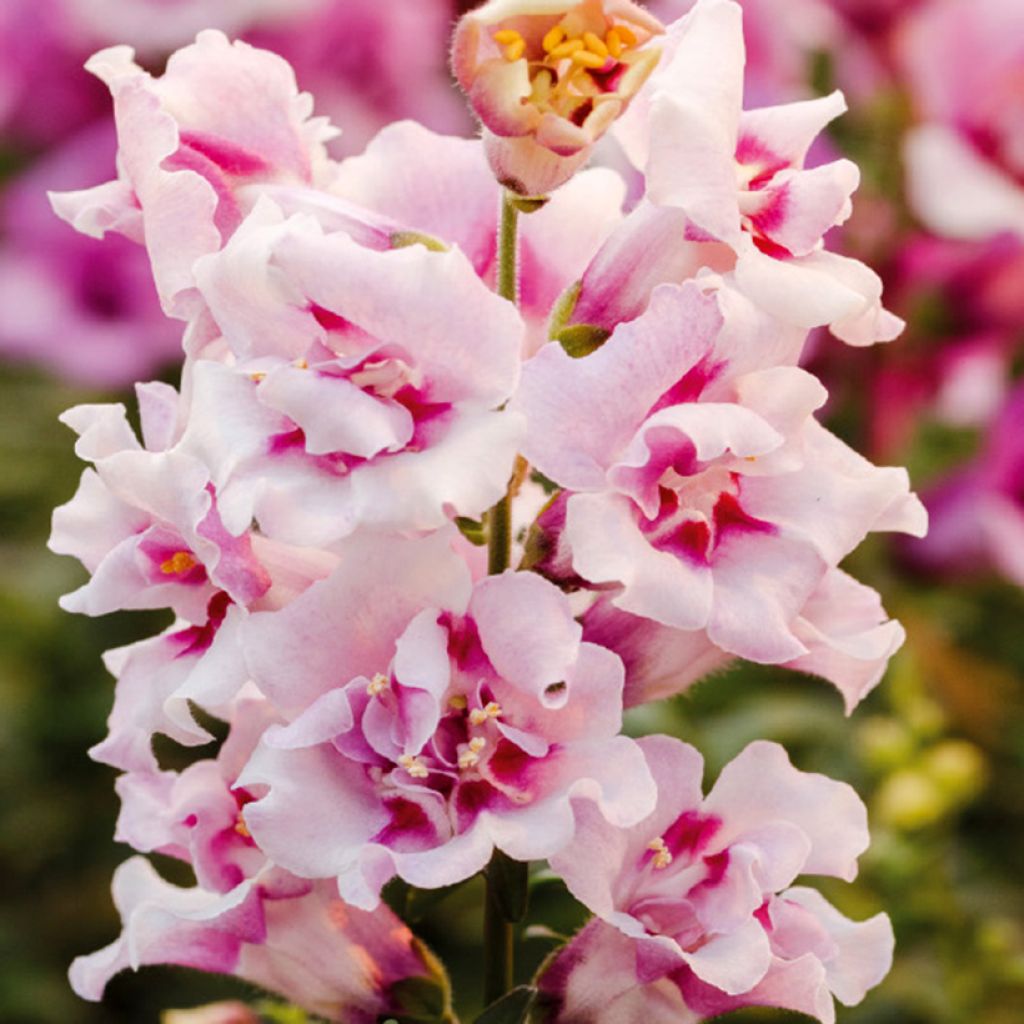

Snapdragon Twinny Orchid F1 seeds - Antirrhinum majus
Snapdragon Twinny Orchid F1 seeds - Antirrhinum majus
Antirrhinum x majus Twinny Orchid F1
Snapdragon, Garden Snapdragon.
Why not try an alternative variety in stock?
View all →This plant carries a 6 months recovery warranty
More information
We guarantee the quality of our plants for a full growing cycle, and will replace at our expense any plant that fails to recover under normal climatic and planting conditions.
Seed-only orders are dispatched by sealed envelope. The delivery charge for seed-only orders is €3.90.
Does this plant fit my garden?
Set up your Plantfit profile →
Description
Antirrhinum 'Twinny Orchid' F1 Hybrid is a delightful variety of dwarf snapdragon that produces large semi-double flowers in two shades of pink, light as butterflies. It is a small, compact, and well-branched plant that blooms for several weeks in summer. It is perfect for sunny borders and flowering pots. It also makes an excellent cut flower. Whether it is an annual or perennial depends on the climate and soil it grows in.
The Twinny™ 'Orchid' dwarf snapdragon is part of a line of dwarf hybrids with double flowers developed in the Netherlands. This 'Orchid' variety stands out for its particularly branched and compact habit and its semi-double flowering in delicate shades. This short-lived perennial forms, within a year of sowing, a clump 40 cm high by 35 cm wide. Its upright stems are covered with small opposite or alternate, lanceolate, entire, smooth leaves of a beautiful dark green colour. Flowering extends from May-June to September-October, until the first frosts. The plant produces very dense, well-built floral spikes, densely covered with large wavy flowers. They are composed of soft pink petals marked with dark pink and red at the base.
Snapdragons are plants accessible to all gardeners, easy to plant in borders, flower beds, or rockeries. In the north and in heavy soil, treat them as annuals, which matters little given their generosity. Dwarf and floriferous varieties like 'Twinny Orchid' are perfect for sunny flowering pots, borders, and rockeries. They pair particularly well with plants with silver foliage like 'Valerie Finnis' artemisia or 'Silver Dust' cineraria, which enhance their vibrant colours. They can also be paired with alyssum, whose flowers create a lovely carpet under the snapdragons, or with annual lobelias with blue flowers.
The snapdragon gets its common name from the particular shape of its flowers, which, when pinched, resemble mouths.
Attention, seeds reserved for experienced gardeners accustomed to sowing very fine seeds. These seeds are as fine as dust, barely visible to the naked eye.
Report an error about the product description
Flowering
Foliage
Plant habit
Botanical data
Antirrhinum
x majus
Twinny Orchid F1
Plantaginaceae
Snapdragon, Garden Snapdragon.
Cultivar or hybrid
Other Antirhinum - Snapdragon seeds
Planting and care
Sow from January to March on the surface of well-drained seed compost. Do not cover the seeds. Place in a propagator or a seed tray in a plastic bag at 20-25°C until germination, which usually takes 10 to 21 days. Light aids germination. Prick out the seedlings when they are large enough to handle into 8 cm pots. Harden off plants gradually to cooler conditions for a few weeks before planting out after all risk of frost, spacing them 23 to 30 cm apart.
Snapdragons thrive in fertile, well-drained, well-worked soil and full sun. The tall snapdragon is not very hardy (-8°C): it is often grown as an annual or biennial plant. However, it is not uncommon to see snapdragons survive several not too severe winters, becoming more susceptible to rust... To try to preserve a beautiful variety, protect the plants from severe winter frosts by improving soil drainage and covering the crowns with a thick layer of leaves or dry herbs: they will regrow in spring and then bloom earlier.
Sowing period
Intended location
This item has not been reviewed yet - be the first to leave a review about it.
Flower seeds
Haven't found what you were looking for?
Hardiness is the lowest winter temperature a plant can endure without suffering serious damage or even dying. However, hardiness is affected by location (a sheltered area, such as a patio), protection (winter cover) and soil type (hardiness is improved by well-drained soil).

Photo Sharing Terms & Conditions
In order to encourage gardeners to interact and share their experiences, Promesse de fleurs offers various media enabling content to be uploaded onto its Site - in particular via the ‘Photo sharing’ module.
The User agrees to refrain from:
- Posting any content that is illegal, prejudicial, insulting, racist, inciteful to hatred, revisionist, contrary to public decency, that infringes on privacy or on the privacy rights of third parties, in particular the publicity rights of persons and goods, intellectual property rights, or the right to privacy.
- Submitting content on behalf of a third party;
- Impersonate the identity of a third party and/or publish any personal information about a third party;
In general, the User undertakes to refrain from any unethical behaviour.
All Content (in particular text, comments, files, images, photos, videos, creative works, etc.), which may be subject to property or intellectual property rights, image or other private rights, shall remain the property of the User, subject to the limited rights granted by the terms of the licence granted by Promesse de fleurs as stated below. Users are at liberty to publish or not to publish such Content on the Site, notably via the ‘Photo Sharing’ facility, and accept that this Content shall be made public and freely accessible, notably on the Internet.
Users further acknowledge, undertake to have ,and guarantee that they hold all necessary rights and permissions to publish such material on the Site, in particular with regard to the legislation in force pertaining to any privacy, property, intellectual property, image, or contractual rights, or rights of any other nature. By publishing such Content on the Site, Users acknowledge accepting full liability as publishers of the Content within the meaning of the law, and grant Promesse de fleurs, free of charge, an inclusive, worldwide licence for the said Content for the entire duration of its publication, including all reproduction, representation, up/downloading, displaying, performing, transmission, and storage rights.
Users also grant permission for their name to be linked to the Content and accept that this link may not always be made available.
By engaging in posting material, Users consent to their Content becoming automatically accessible on the Internet, in particular on other sites and/or blogs and/or web pages of the Promesse de fleurs site, including in particular social pages and the Promesse de fleurs catalogue.
Users may secure the removal of entrusted content free of charge by issuing a simple request via our contact form.
The flowering period indicated on our website applies to countries and regions located in USDA zone 8 (France, the United Kingdom, Ireland, the Netherlands, etc.)
It will vary according to where you live:
- In zones 9 to 10 (Italy, Spain, Greece, etc.), flowering will occur about 2 to 4 weeks earlier.
- In zones 6 to 7 (Germany, Poland, Slovenia, and lower mountainous regions), flowering will be delayed by 2 to 3 weeks.
- In zone 5 (Central Europe, Scandinavia), blooming will be delayed by 3 to 5 weeks.
In temperate climates, pruning of spring-flowering shrubs (forsythia, spireas, etc.) should be done just after flowering.
Pruning of summer-flowering shrubs (Indian Lilac, Perovskia, etc.) can be done in winter or spring.
In cold regions as well as with frost-sensitive plants, avoid pruning too early when severe frosts may still occur.
The planting period indicated on our website applies to countries and regions located in USDA zone 8 (France, United Kingdom, Ireland, Netherlands).
It will vary according to where you live:
- In Mediterranean zones (Marseille, Madrid, Milan, etc.), autumn and winter are the best planting periods.
- In continental zones (Strasbourg, Munich, Vienna, etc.), delay planting by 2 to 3 weeks in spring and bring it forward by 2 to 4 weeks in autumn.
- In mountainous regions (the Alps, Pyrenees, Carpathians, etc.), it is best to plant in late spring (May-June) or late summer (August-September).
The harvesting period indicated on our website applies to countries and regions in USDA zone 8 (France, England, Ireland, the Netherlands).
In colder areas (Scandinavia, Poland, Austria...) fruit and vegetable harvests are likely to be delayed by 3-4 weeks.
In warmer areas (Italy, Spain, Greece, etc.), harvesting will probably take place earlier, depending on weather conditions.
The sowing periods indicated on our website apply to countries and regions within USDA Zone 8 (France, UK, Ireland, Netherlands).
In colder areas (Scandinavia, Poland, Austria...), delay any outdoor sowing by 3-4 weeks, or sow under glass.
In warmer climes (Italy, Spain, Greece, etc.), bring outdoor sowing forward by a few weeks.

































